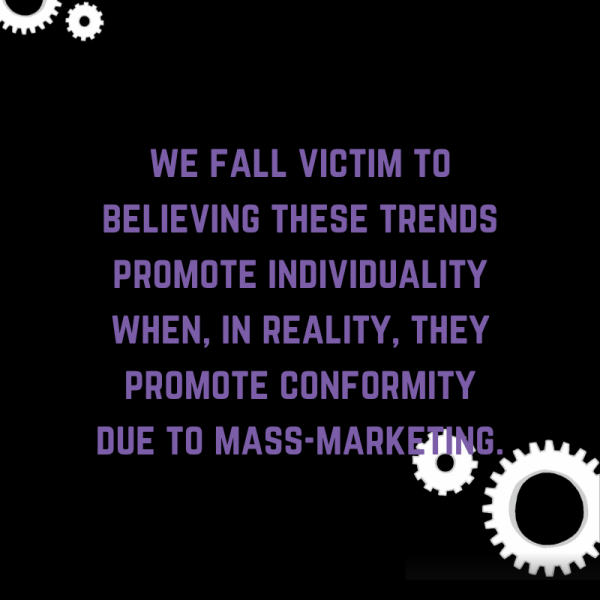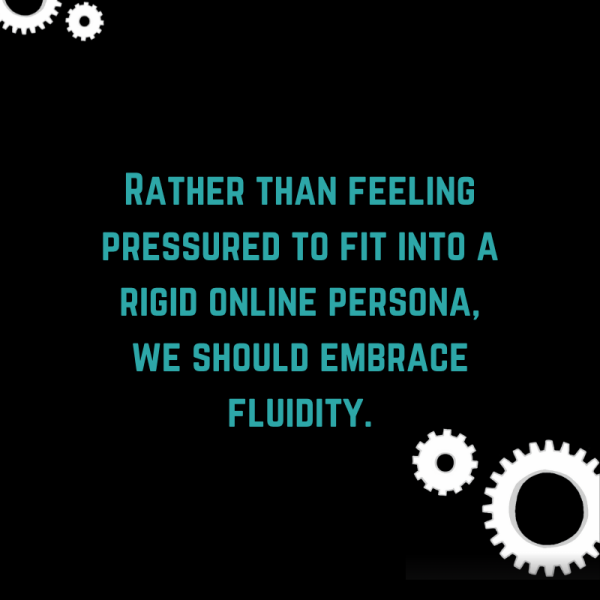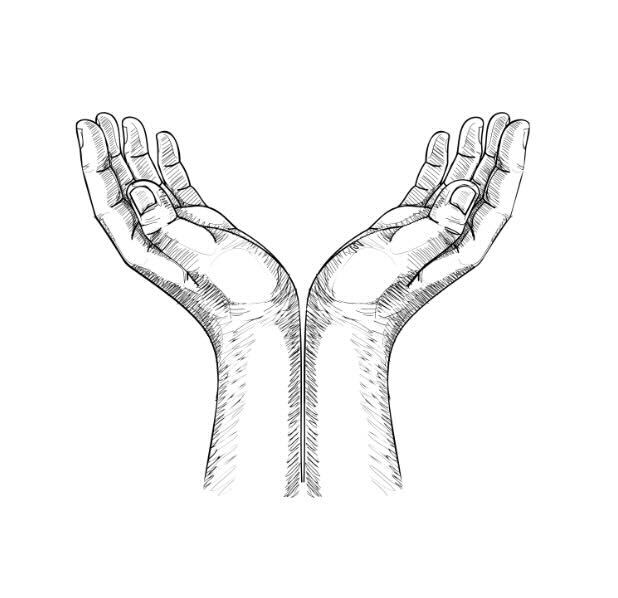Scrolling through endless Pinterest pictures, we may spend hours pinning and creating photo boards with images of nails, outfits and hairstyles — each pin aligning seamlessly with our past likes and searches. The algorithm has learned our preferences, and with each added pin, our aesthetic solidifies, becoming not just a board of images but a reflection of their perceived identity.
Social media algorithms have begun subtly dictating how we see ourselves in recent years, encouraging us to fit our identity into streamlined aesthetics and trends. From the “clean girl” to the “sigma male,” online culture establishes a packaged way to define ourselves, versions of our identity reinforced by personalized content loops. Apps like TikTok and Instagram keep users engaged through algorithms that filter content based on data from the user’s preferences and interaction history. A 2024 survey found that 58% of users felt pressured to conform to an identity set by their social media algorithm.
Ultimately, the crux of the issue is that algorithms amplify the amount of content we consume and the aesthetic we align ourselves with to the point of tunnel vision. This is especially true for our clothing choices, a tool for how we perceive people’s personalities — we often turn to fashion and makeup to cultivate our image. Moreover, by adopting these rigid and narrow labels as definitions for who we are, our aesthetics are rendered monolithic, and reduced to a one-dimensional and easily marketable trend. A person interested in cottage core may never see its intersectionality with other styles, like gothic influences or punk elements, unless they intentionally seek it.
 Many online subcultures revolve around purchasing specific products — “clean girl” skincare and gold jewelry or thrifted cottagecore cardigans and vintage decor. Identity becomes something you buy rather than something you cultivate. For example, the “what are we wearing this spring/summer” trend on TikTok highlights how influencers and brands dictate what types of aesthetics are “in” during a certain season. In fact, according to CivicScience, 68% of Gen-Z follow fashion trends originating from social media.
Many online subcultures revolve around purchasing specific products — “clean girl” skincare and gold jewelry or thrifted cottagecore cardigans and vintage decor. Identity becomes something you buy rather than something you cultivate. For example, the “what are we wearing this spring/summer” trend on TikTok highlights how influencers and brands dictate what types of aesthetics are “in” during a certain season. In fact, according to CivicScience, 68% of Gen-Z follow fashion trends originating from social media.
This feeds into consumerism, with Gen Z having the highest proportion of fast fashion consumers. 13% of teens shop at stores such as Zara and H&M, which advertise on social media and track online purchase patterns using AI algorithms. This ironically inhibits true self-expression and identity formation: we fall victim to believing these trends promote individuality when, in reality, they promote conformity due to mass-marketing.
While some may argue that algorithms merely reflect our interests, they prevent interests from evolving. The stagnating effect of algorithms locks us into aesthetics they may not have adhered to long-term otherwise.
To counteract this digital tunnel vision, we must encourage real-world exploration. Instead of letting an algorithm dictate our interests, we should actively seek experiences outside of our digital comfort zones. This could mean picking up a new hobby, engaging in different social circles or simply taking the time to reflect on what truly resonates with us beyond what is trending online. “Touching grass” — although used humorously to suggest stepping away from digital life — can be a simple yet effective way to reconnect with reality.
That being said, cutting out social media entirely isn’t necessary. Instead, we should approach their online habits differently by diversifying their content consumption. Resetting feeds by clearing caches or actively following content creators with different

aesthetics can break the cycle of algorithm-driven identity formation. Exploring historical and academic perspectives on fashion, identity and cultural trends can also provide a more nuanced understanding of why certain aesthetics rise and fall in popularity, helping to detach personal identity from consumerism.
Additionally, raising awareness of how trends and aesthetics are marketed can help individuals separate their sense of self from the products they buy. Rather than feeling pressured to fit into a rigid online persona, we should embrace fluidity — allowing ourselves to evolve and redefine our interests over time without feeling confined to one aesthetic.
Perhaps the next time you find yourself scrolling through Pinterest, you could search for something entirely different from your usual aesthetic. Who knows? You might just discover a new side of yourself that no algorithm could have predicted.








